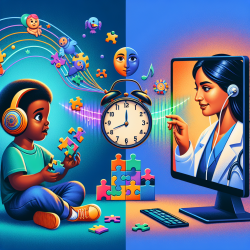Here are the key takeaways from the study and practical ways to implement its findings:
Understanding the Study
The study analyzed data from 56 children using cochlear implants, focusing on their speech perception in noise at age 5 and language abilities at age 9. The findings showed that early speech perception in noise is a significant predictor of later language ability, even after controlling for early language skills.
Key Findings
- Early speech perception in noise at age 5 significantly predicts language ability at age 9.
- Children with better early speech perception skills tend to develop stronger language skills over time.
- Interventions targeting both language skills and auditory capabilities are crucial for optimizing outcomes.
Practical Applications for Practitioners
As practitioners, it's essential to incorporate these findings into your therapeutic strategies. Here are some actionable steps:
1. Early Assessment and Intervention
Conduct comprehensive assessments of speech perception in noise for preschool-aged children with cochlear implants. Early identification of deficits allows for timely intervention.
2. Targeted Auditory Training
Implement auditory training programs that focus on improving speech perception in noise. Techniques such as spatial listening and audio-visual training can be beneficial.
3. Use of Assistive Technologies
Encourage the use of noise-reduction technologies and remote microphones in both educational and home settings. These tools can significantly improve the signal-to-noise ratio, aiding in better speech perception.
4. Collaborative Approach
Work closely with parents, educators, and other professionals to create a supportive environment that enhances both language and auditory skills. Consistent communication and shared goals are key to success.
Encouraging Further Research
While this study provides valuable insights, the field of speech-language pathology can always benefit from further research. Consider investigating the long-term impacts of various intervention strategies or exploring the role of cognitive and phonological skills in speech perception and language development.
To read the original research paper, please follow this link: Predicting 9-Year Language Ability from Preschool Speech Recognition in Noise in Children Using Cochlear Implants










